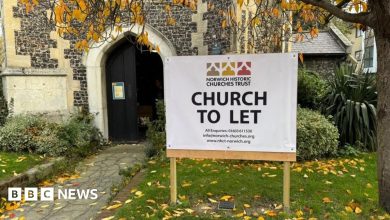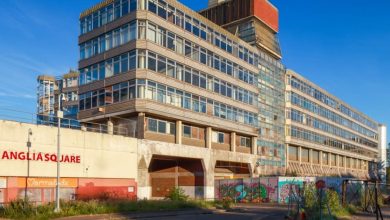‘Neglected’ historical Norwich parks deemed at risk

Historic Norwich Parks in Need of Revival: A Tale of Past Glory and Present Struggle
The story of Mile Cross Gardens and Wensum Park in Norwich is one of inspiring beginnings and unfortunate decline. These historic green spaces were born in the aftermath of World War One as part of Norwich’s groundbreaking social housing initiative. With a workforce primarily consisting of unemployed veterans, these parks represented not just new recreational spaces, but also a path to reintegration and dignity for those who had served their country. Mile Cross Gardens, the more modest of the two, was specifically designed to provide families living in the estate with a peaceful retreat from urban life—a place where children could play, neighbors could meet, and community bonds could strengthen in the healing years after the Great War.
Wensum Park, the grander of the two spaces, once boasted an impressive array of features that would be the envy of many contemporary parks. Visitors could enjoy a refreshing swim in its dedicated facilities, stroll through meticulously maintained rose gardens that burst with color and fragrance, wander along terraced walks beside the gentle flow of the River Wensum, or find solitude among its woodland areas. These weren’t merely recreational facilities but carefully designed spaces meant to elevate the everyday lives of Norwich residents, particularly those in social housing who might not otherwise have access to such refined environments. The parks represented a democratic vision of beauty and leisure available to all citizens regardless of their economic standing.
Sadly, according to Historic England, which maintains the Heritage at Risk Register, these once-vibrant public spaces have fallen victim to “long-term underinvestment due to declining resources,” resulting in severe deterioration of their historic features. The decline tells a poignant story of changing priorities and economic challenges. At Mile Cross Gardens, the pavilions that once served as gathering places now suffer from damp and structural problems, while the elegant garden features have been reduced to mere stone pergola bases—silent remnants of a more gracious era. These physical deteriorations mirror the declining investment in public spaces that has affected many British communities over decades.
The situation at Wensum Park reflects an even more dramatic transformation from its original state. The fountain and pool that once served as centerpieces of the park have completely disappeared, erasing a focal point that brought both visual beauty and the soothing sounds of water to visitors. Perhaps more distressing is the heavy vandalism of the park’s shelter, suggesting not just neglect but active harm. Beyond these specific damages, both parks have fallen into a cycle where neglect breeds anti-social behavior, which in turn discourages regular use by the community, leading to further neglect. This vicious circle has transformed spaces once designed to elevate community life into areas that sometimes detract from it.
These deteriorating conditions stand in stark contrast to the original vision for these parks, which embodied the post-WWI spirit of building a “country fit for heroes.” The employment of veterans to create these spaces was not merely an economic decision but a symbolic one—those who had defended the nation were now helping to build its peaceful future through creating spaces for community and recreation. The decline of these parks represents not just the loss of amenities but the fading of a certain civic idealism that saw public spaces as essential to community wellbeing and social cohesion. What was once a progressive statement about the importance of green spaces for all citizens has become, unfortunately, a reminder of how such commitments can erode over time.
There is, however, reason for cautious optimism. Norwich City Council has recognized the importance of preserving these historic green spaces and is actively seeking funding as part of a comprehensive 10-year strategy for improvements. This plan acknowledges that these parks are not just recreational facilities but important historical landmarks that tell the story of Norwich’s social development and architectural heritage. If successful, these efforts could not only restore the physical features of the parks but revive their original purpose as spaces that bring dignity, beauty, and community connection to the lives of Norwich residents. The potential restoration of these parks represents an opportunity to reconnect with the civic values that inspired their creation—a chance to honor both the veterans who built them and the generations of Norwich families who have enjoyed them over the past century.








